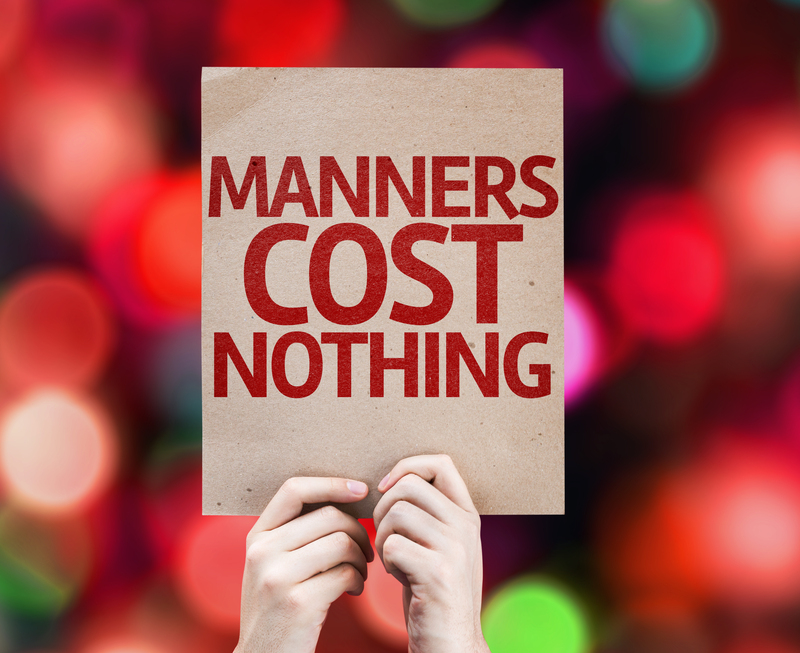Packing Essentials for a Flawless Move
Posted on 22/05/2025
Packing Essentials for a Flawless Move: The Ultimate Guide
Moving can be an overwhelming process, whether you're relocating across town or crossing the country. However, with the right preparation and a comprehensive list of packing essentials for a flawless move, you can transform this stressful task into a seamless and organized experience. In this guide, we will walk you through vital packing tips, essential supplies, and strategic steps to ensure every aspect of your move is covered.

Why Proper Packing Matters
Attempting to relocate without an effective packing strategy can lead to damaged belongings, lost items, and unnecessary stress. Proper packing ensures:
- Protection of your valuables
- Efficient use of space
- Quicker unpacking and organization at your new place
Let's dive into the key packing essentials and techniques that will help you achieve a flawless move.
The Must-Have Packing Supplies
Before you begin the process, you'll need to gather the right materials. High-quality supplies are the foundation for a successful move. Here is a checklist of the most important packing supplies for moving:
Sturdy Moving Boxes
- Small boxes (1.5 cu. ft.): Ideal for books, canned goods, and small, heavy items.
- Medium boxes (3 cu. ft.): Best for kitchenware, toys, and smaller appliances.
- Large boxes (4.5 cu. ft. and up): Perfect for linens, pillows, and light but bulky items.
- Wardrobe boxes: Essential for hanging clothes without wrinkling them.
- Dish packs: Reinforced for fragile kitchen items.
Protective Packing Materials
- Bubble wrap: Excellent cushioning for breakable items.
- Packing paper: Prevents scratches and is perfect for wrapping delicate items.
- Foam sheets and peanuts: Fills voids in boxes to prevent shifting during transit.
- Stretch wrap: Secures drawers, doors, and bundles oddly-shaped items together.
Adhesives & Fasteners
- Packing tape: Heavy-duty tape to seal boxes securely.
- Masking tape: Useful for labeling and temporary fixes.
Labeling & Organizing Tools
- Permanent markers: Clear labeling prevents confusion during unpacking.
- Color-coded labels: Makes room assignment easier at your new home.
- Inventory sheets: Track all of your belongings to ensure nothing is left behind.
Moving Equipment
- Dollies and hand trucks: Save your back when moving heavy boxes or furniture.
- Furniture pads and blankets: Prevent damage to large items and walls.
- Gloves: Protect your hands during the heavy lifting.
_Always make sure you have more supplies than you think you'll need._ Running out mid-packing is a surefire way to cause chaos and delay.
Packing Essentials Checklist: Don't Miss a Thing!
- Boxes (various sizes)
- Wardrobe boxes
- Bubble wrap and foam sheets
- Packing paper and tissue
- Packing tape (a dispenser will help speed things up)
- Markers and labeling stickers
- Ziplock bags (for hardware and small parts)
- Trash bags
- Scissors and box cutters
- Basic toolkit
- Plastic totes (for items you plan to access quickly)
- First aid kit
- Personal overnight bag (with essentials)
Step-by-Step Packing Strategy for a Flawless Move
With your supplies ready, it's time to start the actual packing. Follow these steps for the most efficient and stress-free experience:
1. Declutter Before You Pack
_One of the most overlooked moving essentials is downsizing before you begin packing._ Go through every room and set aside items to sell, donate, or discard. Packing fewer items saves you time, effort, and money.
2. Pack Non-Essentials First
Start with items you rarely use, such as out-of-season clothing, decor, books, or holiday dishes. Packing these first ensures that your daily routine isn't disrupted.
3. Tackle Room-by-Room
Packing by room helps keep things organized and makes the labeling process much easier. Use color-coded labels for each room to simplify unloading, and always pack similar items together.
4. Use the Right Size Box for Each Item
Heavier items belong in smaller boxes. Lighter, bulkier items can be packed in large boxes. This approach prevents boxes from becoming too heavy or breaking under excessive weight.
5. Layer and Cushion
Always line box bottoms with crumpled packing paper. Place heavier items at the bottom, lighter ones on top, and fill gaps with padding. Protect fragile items by wrapping each piece individually and using plenty of bubble wrap or foam peanuts.
6. Label Everything Clearly
Clear, detailed labels are your best friend when it comes time to unpack. Include both the room and the contents on every box, and mark any delicate items as "fragile." Create an inventory of box numbers and corresponding rooms to keep a master list of your belongings.
7. Pack an Essentials Box
This is perhaps the most crucial packing essential for a stress-free move. In this box, include items you'll need right away, such as toiletries, medications, chargers, basic cooking utensils, and a few changes of clothes.
The Ultimate Packing Timeline
Six Weeks Before Moving
- Purge unwanted items and donate or discard extras.
- Gather packing materials and supplies.
- Start packing seasonal or rarely used belongings.
Four Weeks Before Moving
- Continue packing less-used rooms, such as guest bedrooms or dining areas.
- Label boxes and create your inventory list.
- Arrange for utilities and change of address forms.
Two Weeks Before Moving
- Begin packing essential rooms like the kitchen and bathrooms, keeping necessary items for last-minute use.
- Pack fragile and valuable items carefully.
One Week Before Moving
- Disassemble large furniture and pack hardware in labeled bags.
- Finish packing all non-essential items.
- Prepare your essentials box and keep it accessible.
- Confirm moving arrangements with your company or rental truck provider.
Moving Day
- Ensure all boxes are sealed, labeled, and ready to go.
- Perform a final walkthrough to check closets, cabinets, and storage spaces.
- Keep your essentials box, valuables, and important documents with you.
Packing Fragile Items: Special Considerations
Properly packing breakables is critical to prevent heartbreak upon arrival. Here are specialized tips for protecting your most delicate belongings when preparing for a flawless move:
- Dishes: Pack vertically and wrap each piece individually. Fill empty spaces with bubble wrap or packing paper.
- Glassware: Use dividers, cushion with paper, and never stack heavy items on top.
- Mirrors and Artwork: Use specialty boxes or create a cardboard sandwich for extra protection. Always label as "fragile."
- Electronics: Whenever possible, use original packaging. Add extra padding and label cords for easier reinstallation.
Efficient Unpacking: Prepare for Success at Your New Address
Unpacking can be just as overwhelming as packing, but with a well-organized system, it becomes much easier. Here's how to do it efficiently:
- Start with Your Essentials Box: This allows you to settle in the first night without frantic searching.
- Unpack Room by Room: Focus on high-priority areas like the kitchen, bathroom, and bedrooms.
- Break Down Boxes as You Go: Keep clutter minimal by recycling empty boxes and packaging materials.
- Manage Trash and Recycling: Have sturdy trash bags and recycling bins ready.
Tip: Inspect each box for signs of damage and report any issues to your moving company immediately if you hired professionals.
Expert Tips for a Successful Move
- Photograph electronics and complex assembly items before taking them apart--it makes reassembly much easier.
- Keep hardware (screws, bolts) in labeled ziplock bags and tape them to their matching furniture.
- Never overpack boxes--weight should not exceed 50 lbs to prevent injuries and accidents.
- Use luggage and tote bags for clothing, linens, and personal items--take advantage of all available storage solutions.
- Have cleaning supplies handy for both the move-in and move-out process.

Common Packing Mistakes to Avoid
Even with the best intentions, mistakes can happen. Avoid these common pitfalls to ensure your move goes off without a hitch:
- Leaving packing until the last minute--start early!
- Failing to label boxes with BOTH contents and destination room.
- Underestimating the number of boxes needed.
- Packing prohibited items (e.g., flammables) with regular belongings.
- Ignoring weatherproofing--rain or snow can damage unprotected boxes.
Conclusion: Master Your Move with the Right Packing Essentials
A smooth, hassle-free move begins with organization, quality packing materials, and a clear plan of action. By following the packing essentials and strategies outlined in this comprehensive guide, you can dramatically reduce stress, protect your belongings, and ensure a flawless move.
Remember, investing in the best packing essentials not only pays off by keeping your items safe but also makes settling into your new home an enjoyable experience. With the right approach, your move will not just be another stressful story, but a fresh start filled with excitement and new opportunities!
Begin your journey to a flawless move with comprehensive planning and the best packing essentials--and enjoy the peace of mind you deserve. Happy moving!



